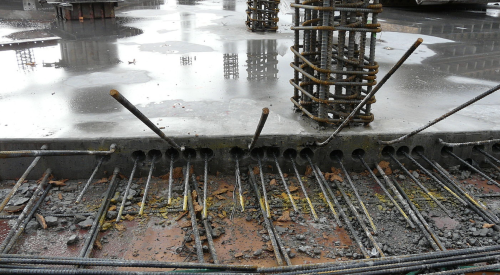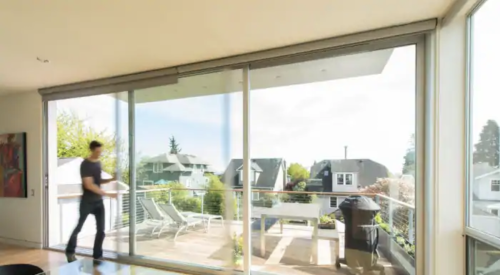|
Door goes up, door goes down — that's all there was to the Plain Jane wood or steel garage door models of old. But today's doors — often made of composite materials — are much stronger, better insulated and, in many cases, a dynamic part of the exterior décor.
"The garage is often the most visible part of a home, and it is beginning to get more attention from today's home buyers," says John Monfore, product marketing manager at Jeld-Wen. According to the NAHB, Americans spent an estimated $2.5 billion on garage doors in 2005. A study conducted by the Door & Access Systems Manufacturers Association (DASMA) in 2006 concluded 89 percent of homeowners use the garage as the primary access to their homes, highlighting what Monfore says makes it important to have an attractive but durable garage door, such as the Carriage House design.
 |
Carriage House and similar styles are especially popular among homeowners and go well with Craftsman as well as Mediterranean-style homes, according to Jeld-Wen.
What's InsideMonfore and Godfrey say the garage doors of old (and most garage doors currently installed) are made of steel backed by a rigid foam insulation with a baked-on primer and polyester for rust and UV protection. The steel introductions caused older wood doors to take a backseat to other cheaper and easier-to-maintain products. "Changes in garage doors in the past moved very slowly. They've moved from wood to steel to raised panel-style and now onto the latest materials," says Monfore. Surprisingly, Monfore says, the Carriage House offering has actually been around for years, first appearing in the custom home market and later trickling down into the production side.
Garages of the FutureWhat have been driving today's garage door market are aesthetics of the Carriage style as well as the latest composite materials, such as the non-absorbent Polystyrene core offered by Jeld-Wen. Many other manufacturers' garage door materials carry similar or superior R-values to steel. Gadco, for example, fabricates a door made from a plastic material found on pickup truck bed liners. Wayne-Dalton, in a partnership with Therma-Tru, recently released the 9700 and 9800 models, which feature a molded fiberglass surface over a steel door. Raynor's garage door offerings also include the Carriage House, albeit in a wood door.
"This design, I think, will be around for a while at least. The garage door movement is not a fad. It's still moving along," says Monfore.
"People are deciding that it's worth the money to invest in a garage door — and it's all because manufacturers have been providing people with more options."
|











